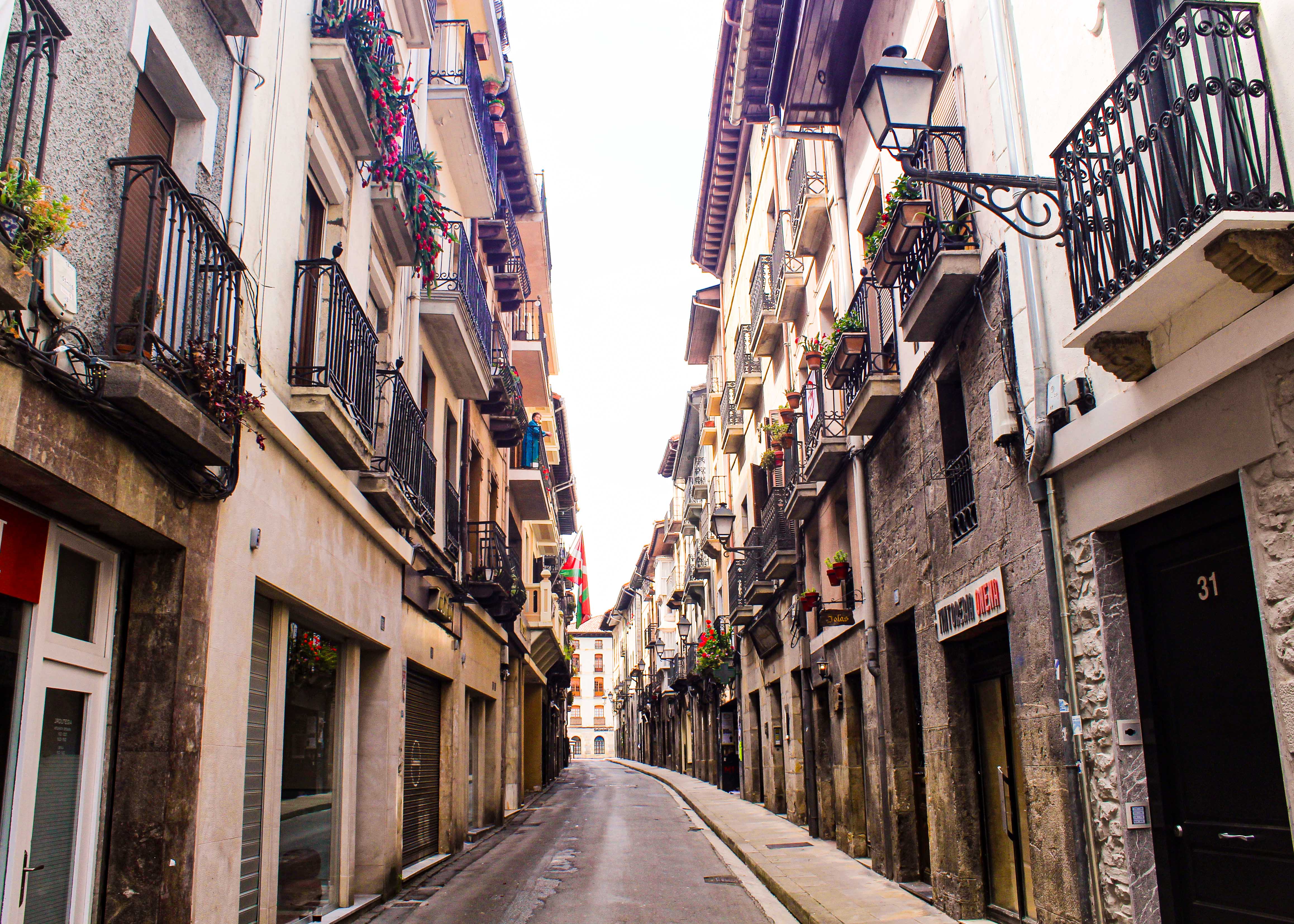Our first full day in Spain started in an English fashion with a pot of tea on a bench at the town’s free aire for camping cars, overlooking the mists rising from the steeply wooded hillside opposite. We contemplated the drive up it that we would have to do, to visit nearby Bergara.
Dog walkers and joggers of Elorrio greeted us cheerfully as we weighed up the 12 miles of winding local road against the alternative 20-mile round route using the nearby motorway.

Decided and set upon our course at 9am in hot sunshine, Berti gamely swung us up and around hair pin bends, dodging lycra-clad cyclists pedalling at 2mph, and climbing up to 455m above sea level.
Tiny hamlets were surrounded by lush green fields and forests of tall pine trees. We descended into Bergara and found the aire besieged by travellers in caravans, making ample use of the free electrical points and cheekily plumbed into the fire hydrant for water.
Parking Berti a short distance away we set off to find the characterful historical town hidden amongst an onion-skin of newer, taller apartment buildings.

Following old boys and their grandchildren along a shaded alleyway of pollarded plane trees, we meandered into its charming centre.
Bergara is a place to wander and admire its many churches, mansions and colleges which were established as leading educational institutions in the eighteenth century’s Enlightenment.
Warm jasmine-scented air wafted us spiralling up and around to the main square just outside the town walls where we joined returning churchgoers to devour our first pintxos of the trip – anchovy and green peppers with olives on skewers and a hefty wedge of freshly cooked tortilla.


Fortified, we moved on to the lively commercial town of Beasain, in an idyllic setting surrounded by mountains alongside the Oria River.
The Itzgarta Complex is one of the region’s most important collections of intact historical buildings forming a 13th century Noble’s estate. The stone and beamed manor house, chapel, mill, foundry and roadside inn sit alongside the river dam and crossed by the 13th century stone bridge. Looking rather quaint today it would have been a hive of agricultural activity and ironworks.

For five hundred years it flourished as the result of its strategic location at the crossroads linking the Alava plain to the coastal ports, as well as thanks to a wealth of natural local resources including hardwood from the forest, iron ore from nearby mines and waterpower provided by the Oria.
The town’s prosperity continues as it is part of the powerhouse of the Basque Country’s automotive industry. This leading sector of 300 companies manufactures a third of all components in Spain along with two important factories of Mercedes Benz and Volkswagen vehicles.
This large concentration in a small region like the Basque Country is comparable only to some German federal states. 90% of turnover is exported, more than half out of Europe and it employs around 36,000 people in the historical territories of Bizkaia, Gipuzkoa and Alava. We passed long freight trains loaded with shiny new hatchbacks and estate cars in a rainbow of colours on their way out of the town to their new owners.

Swerving the town’s famous delicacy of a large blood-engorged sausage served hot on a thin slice of bread we joined local families beneath the shaded archways of the Old Town’s market hall for a glass of Tzakolis and accompanying pintxos.
At 3pm the crowds drifted away and we with it, retracing our steps in now baking heat to Berti, parked next to the impressive FC Beasain Stadium hosting a children’s football competition. Parents thronged around the turnstiles where encouraging mums sold raffle tickets to win a weighty leg of cured Serrano Ham at halftime.
Six miles further south we arrived in the small hilltop town of Segura. It proved to be our first ‘trip boon’, an unexpected delight of a medieval gem, shaped like a tear drop and ringed by pointed and picturesque mountains.

Its tiny centre is a central square of fortified manor houses and clustered along its main street are wooden beamed and colourfully plastered former merchants’ houses, sagging slightly and leaning into each other for support.
Ancient wooden doorways punched with iron studs gave the sense of intrigue and defensiveness, lifted by decorative gold metalled or actual, dried Eguzkilore flowers. Known as the ‘flower of the sun’ it is a wild thistle that grows on the mountainside and has a mystical past.
Basque culture celebrates the Eguzkilore as given by Amalur, the goddess of the land to men to protect them from evil spirits and storms.

Positioned between neighbouring Castille and the coast, Segura was another important regional trading centre in the Middle Ages. The only trade today was football talk in the historic Plaza Mayor ahead of Real Sociedad’s final game of the season.
An hour before kick-off at the stadium at Donastia a large, luxury air-conditioned coach rumbled up and collected the hubbub of blue and white wearing fans of all ages, leaving mums, partners and two Brits to savour the sudden quiet of the square and the chirping of its swallows and swifts.


